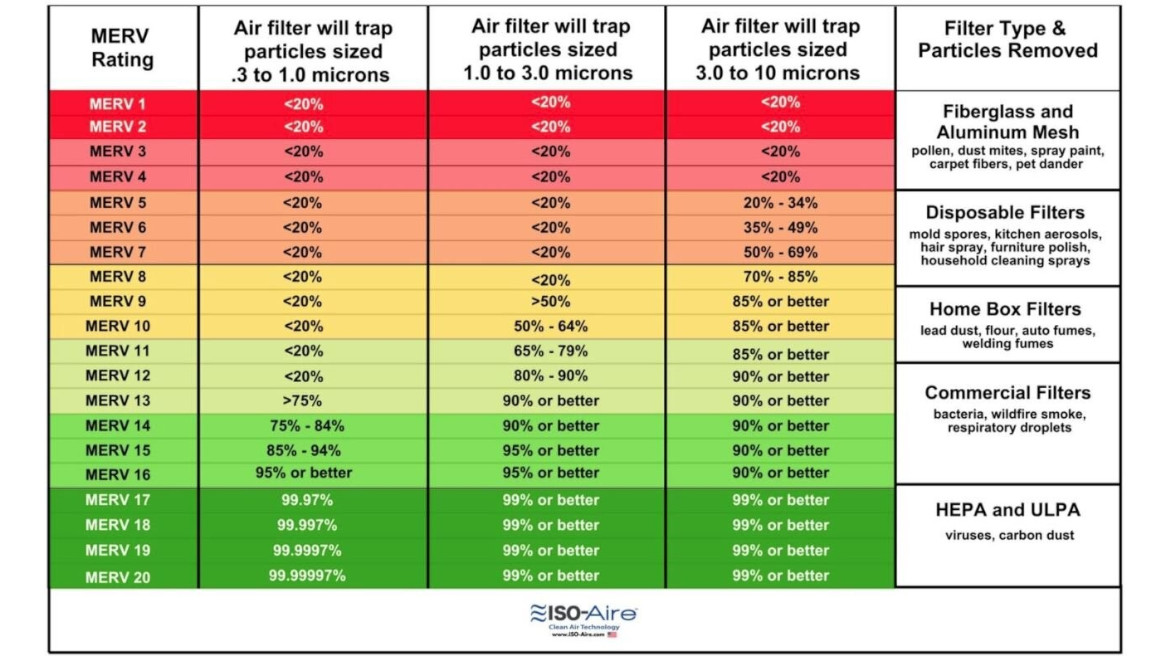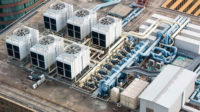In preparation for a return to the physical workspaces, what provisions should be made to make the workplace safer for a general commercial office building?
The following technical information describes air handling standards in for a general commercial office building and to illustrate environmental safety enhancements as prescribed by the U.S. Center for Disease Control and Prevention (CDC) and ASHRAE.
The most effective method of providing a safer workplace environment for a general office building environment for the control of the COVID-19 virus centers around the following:
• Air filtration;
• Air ventilation; and
• Airflow.
Typically, air filtration and airflow are counterproductive — increasing air filtration reduces air change/airflow (and vice-versa), while air change/airflow are similarly at odds with capacity to heat, cool, and humidify the air. This suggests a balance must be achieved between these various components.
Within these requirements, a balance can be achieved for an office building to provide control of the COVID-19 virus.
The building’s landlord should take the following steps:
• Improve the air handler’s filters from the original design to a minimum rating of MERV 13;
• Increase the percentage of outside air; and
• Verify via testing, adjusting, and air balancing (TAB) reports the airflow meets code/requirement of 6 air changes per hour (ACH).
These steps provide an optimal balance of air filtration combined with airflow/air change that aligns with CDC and ASHRAE guidelines.
More technical information and explanation on MERV ratings and why MERV 13 is being recommended is provided below.
All commercial air filters are rated by ASHRAE from MERV 1-20. The higher the rating, the finer the filter is in capturing smaller and smaller particles.
From the table below, a commercial air filer of MERV 13 is rated to capture particles sized 0.3-1.0 microns less than 75%.

It is natural to say, “Let’s increase the MERV rating to MERV 20.” While a higher-rated filter will capture a finer/smaller particle, it takes more fan horsepower to “push” the air through the higher air filter rating. It is also possible to increase the restriction to a level that the fan does not have enough energy (fan horsepower) to push the air through the increased MERV rating filters.
However, when we view the middle column for a MERV-13 air filter, we achieve more than 90% capture for 1.0-4.0 microns. The COVID-19 virus, when attached to a water droplet, falls within the middle column of a MERV-13 filter.
Another item of concern building operators must be aware for the occupant’s safety is to maintain the required number of ACH (air changes per hour). For a general office building, the building’s air-handling unit (AHU) provides 6 ACH. In non-technical terms, it means the entire building is filled and emptied of air six times an hour or one time every 10 minutes.
The purpose of a higher-rated MERV rating is to capture the COVID-19 virus. The coronavirus is from 0.06-0.16 microns in size. However, information has indicated the COVID-19 virus needs moisture to survive. When the COVID-19 virus attaches itself to a droplet and/or droplet nuclei, the particle is predominantly 1.0-4.0 microns in size.
When we also realize that existing air-handling systems were designed for a filter rating of MERV 8 or 9, one needs to be cautioned of increasing the MERV rating at the expense of losing the required 6 ACH.
Some building owners have final filter ratings of MERV 15. This higher rating will capture smaller particles. It’s important to baseline the air filter’s MERV rating and ACH.
A higher rating with a lower than code requirement of 6ACH is not beneficial to the workplace environment.
CDC – Ventilation in Buildings, Update June 02, 2021
CDC – Ventilation in Buildings, Update June 02, 2021, in cooperation with ASHRAE, recommends increasing the air filtration as high as possible without significantly reducing the designed airflow.
Another important step to ensure workplace safety is to affirm the airflow within the building meets design and code. Because we have recently completed an office tenant improvement build-out just prior and during the early stages of the pandemic, the entire workplace has been recently tested and air balanced for airflow and an even air distribution of airflow within the space.
How Big Is a Micron?
Online searches have stated that the COVID-19 virus ranges in size from as small as 0.06 to as large as 1.4 microns in diameter. To give some a perspective on how small this is, the diameter of a human hair ranges from 50-500 microns. When the virus attaches to a droplet, it becomes a larger size particle and more reasonable to capture via an air filter.
Another recommendation by CDC and ASHRAE is to increase the outdoor ventilation to the highest possible levels without compromising indoor temperature and humidity control. The higher ventilation rate is best achieved by increasing the outdoor air via the air handlers, air filter, cooling coils, and ductwork.
By directing the increased outdoor air via the outside air dampers through the AHU, the building’s HVAC system is able to control filtration, airflow (ACH), humidity, cooling, and distribution.
All of the above working together results in a safer workplace environment.
Other Methods Suggested for Considerations
Other methods of controlling viruses and bacteria that are used for non-commercial office spaces are as follows:
• HEPA filters (MERV 20);
• UV-C light – wavelength band C;
• Ozone generators; and
• Atomized chemicals/sprayers.
The following is a brief explanation of the limitations of each as it applies to the general office environment:
• HEPA Filters — MERV-20 filters provide the highest level of air filtration. In order to provide that level of filtration, the systems require high fan horsepower, larger duct area, and the filters need to change more often. The higher filtration does not provide any greater protection to the COVID-19 virus versus a MERV-13 filter.
• UV-C Light — The principal of UV-C technology is based on the intensity of the light versus the duration of exposure to the UV-C light. In order for the UV-C technology to be effective, the virus particles must be directly exposed to the UV light for the prescribe combination of intensity (brightness) and duration (time). Retrofitting a commercial office building HVAC systems to effectively use UV-C technology may be challenging as the engineer aims to meet the exposure rate requirement without reducing the number of ACH. In addition, exposure to UV-C lights is a human risk.
• Ozone Generators — Ozone generators are very effective in combating all organic material. As a result, exposure to ozone (O3) is a high-risk factor to the three Ps: people, pets, and plants. The use of any ozone generators should only be implored in highly controlled environments.
• Atomized Chemicals/Sprayers — This method of control is effective in controlling viruses and bacteria. This method is not used in commercial office environments because it is unsafe for human exposure and breathing.
The above methods are used in special use spaces. Some of those spaces are as follows:
• Hospital intensive care unit (ICU) wards;
• Isolation wards;
• Operating rooms/suites;
• Animal/medical research laboratories;
• Food processing plants;
• Sterile and sterilization environments;
• Pharmaceutical process plant; and
• Potable water and sanitary treatment plants.
The one item in common with the partial list of special-use spaces is the systems that serve these areas are special-built, designed, and engineered for the mission of the space.
The general office building’s HVAC systems are not intended, nor designed for, the above special purposes uses.
In Conclusion
With increased air filtration to a minimum of MERV 13, increased outdoor ventilations, and the required 6 ACH, a safe workplace environment for people can be achieved.





